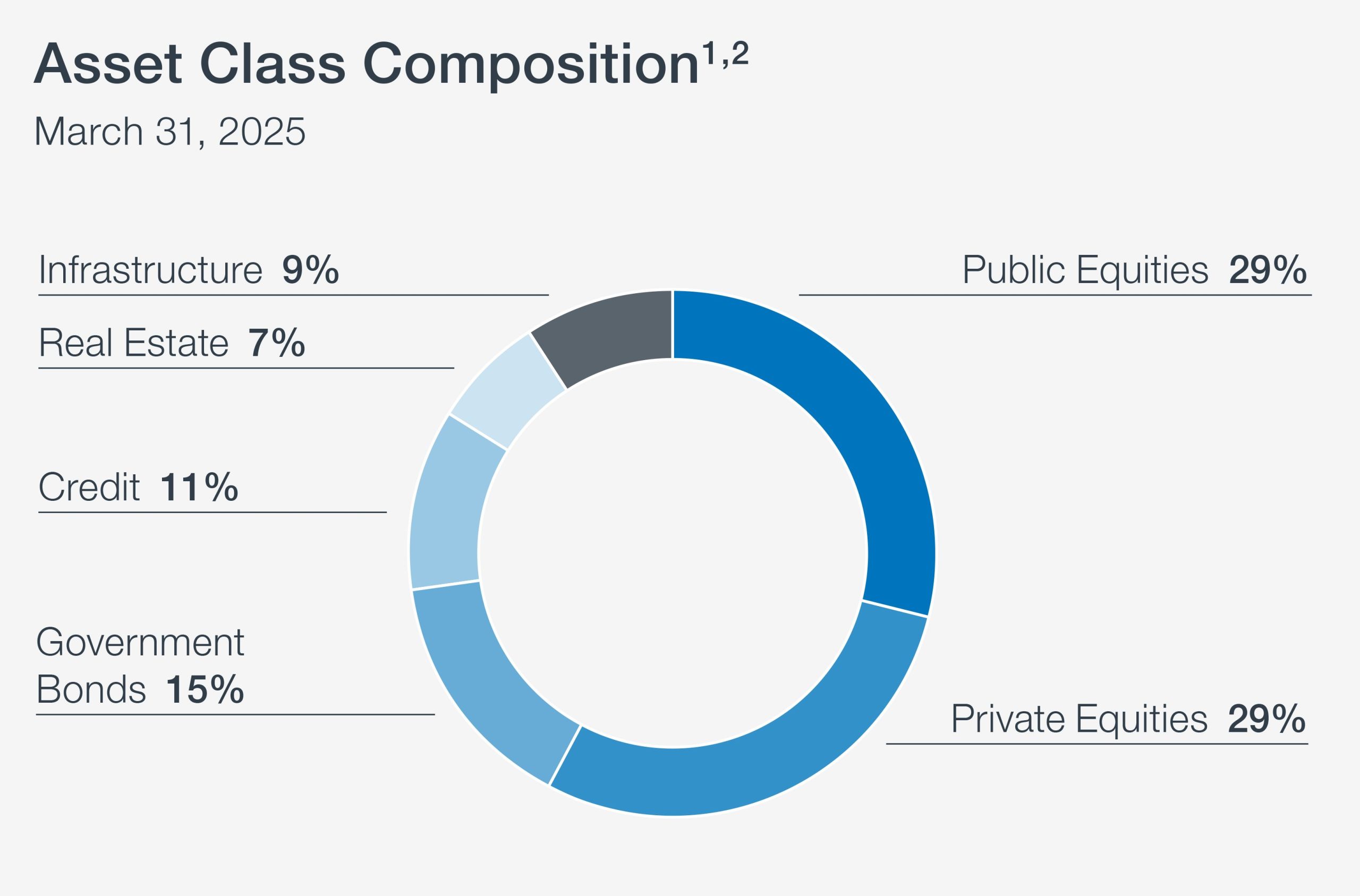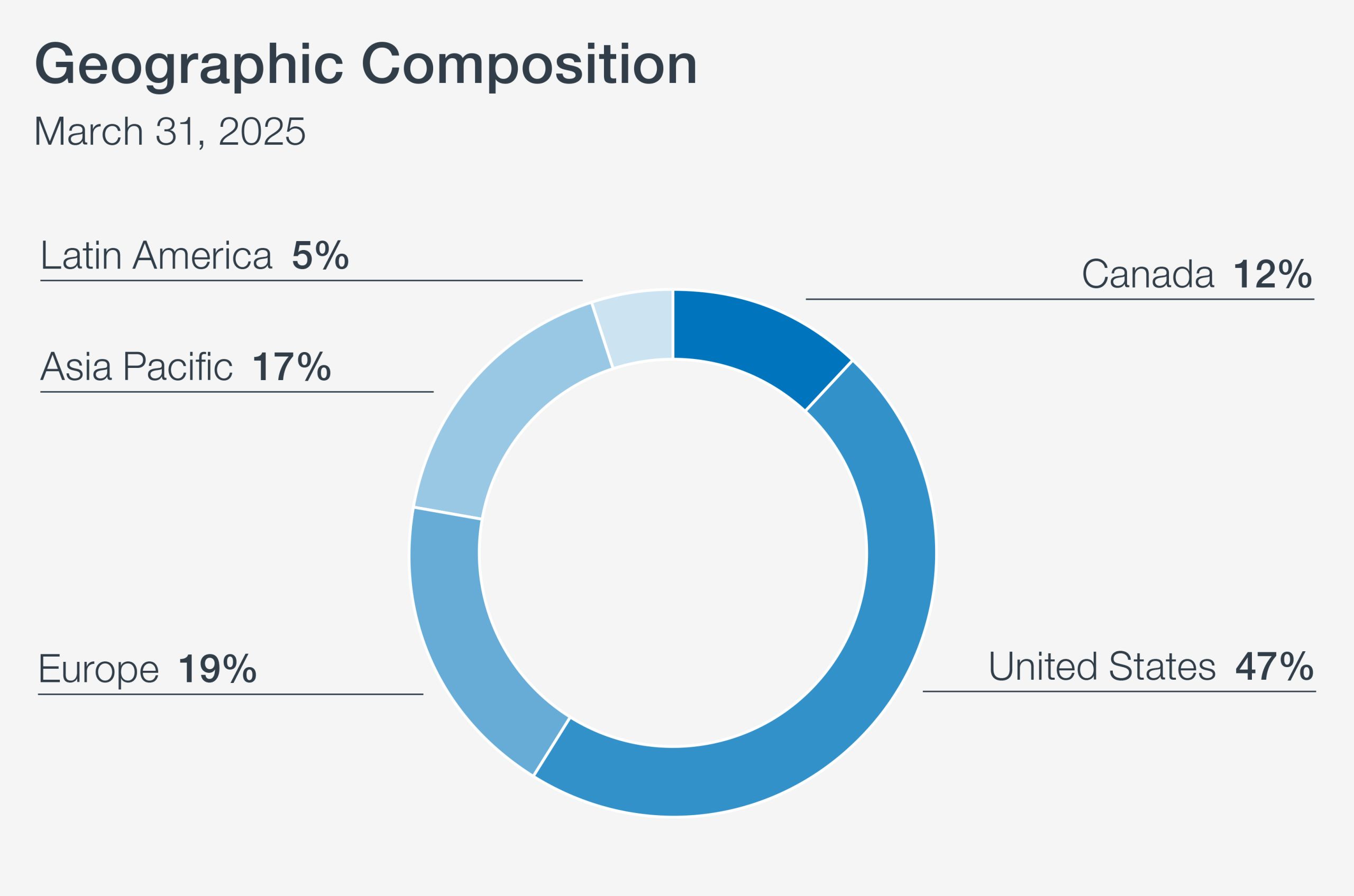FAQs

About Us
CPP Investments is a global investment management organization that invests the Canada Pension Plan (CPP) to help ensure the CPP remains sustainable for the long term. CPP Investments is a Crown Corporation that operates independently of government; its sole aim is to invest the funds and maximize results without undue risk.
The Canada Pension Plan (CPP) meanwhile is a social insurance plan that is funded by the contributions of employees, employers and self-employed people as well as the revenue earned on investments. CPP is administered by Economic and Social Development Canada, a department of the federal government. The CPP covers virtually all employed and self-employed people in Canada, excluding Quebec, which operates its own comprehensive plan, the Quebec Pension Plan.
The Old Age Security (OAS) pension is a monthly payment you can get if you are 65 and older. It is a federal government program funded by general tax revenue.
Canada Pension Plan Investment Board (CPP Investments) was created in 1997 by an Act of Parliament to respond to projections that the employee contributions to pay retirements benefits was not sustainable.
It was determined that a professional investment management organization would be able to grow the fund through investment income to help ensure the CPP remains sustainable for the long term. CPP Investments prudently invests the amounts transferred to us by the CPP, helping to provide a foundation on which Canadians can build financial security in retirement.
After an initial transfer of $12 million from the CPP, we began investing in publicly traded stocks in 1999.
To learn more about our mandate and structure, visit About Us.
Yes. CPP Investments operates at arm’s length from federal and provincial governments with the oversight of an independent, highly qualified professional Board of Directors. The Canada Pension Plan Investment Board Act (CPPIB Act) has safeguards against any political interference. All assets managed by CPP Investments are strictly segregated from government funds. CPP Investments management reports not to governments, but to the CPP Investments Board of Directors.
We are accountable to Parliament and to federal and provincial ministers who serve as the CPP stewards. The CPPIB Act holds our Board of Directors and Management accountable for their performance under a rigorous public accountability regime. We also go beyond our legislated requirements and make every effort to ensure federal and provincial stewards, as well as Canadians, are kept informed of our activities.
Yes. The CPP is projected to be financially sustainable for at least the next 75 years.
Every three years, the Office of the Chief Actuary of Canada, an independent federal body that provides checks and balances on the future costs of the CPP, evaluates the financial sustainability of the CPP over a long period. In December 2022, the Office of the Chief Actuary reaffirmed that each part of the CPP remains sustainable at the legislated contribution rates throughout the 75-year period (i.e., until 2100), based on actuarially accepted assumptions. This is the minimum review period as set out in CPP legislation.
This review takes many factors into account, including:
- The growing base of contributors and employment earnings;
- The rising ratio of those receiving pension benefits relative to contributors; and
- Expected increases in life expectancy.
The next actuarial review will cover the status of the CPP as at December 31, 2024, and will be next performed in 2025.
To find out more about CPP contributions and benefits, please visit the Service Canada website or call 1-800-277-9914 (Canada and the United States toll-free) or 1-613-957-1954 (call collect) outside of Canada and the United States as Service Canada manages the administration of the CPP program.
Other useful government resources:
Employment and Social Development Canada/ Service Canada
Canada Pension Plan Overview
Canada Pension Plan Contact Information
Canadian Retirement Income Calculator
Canada Pension Plan enhancement
Department of Finance Canada – Additional CPP
Backgrounder: Canada Pension Plan (CPP) Enhancement
Backgrounder: A Stronger Canada Pension Plan
Canada Revenue Agency
Canada Pension Plan (CPP)
The Canada Pension Plan enhancement
Our Investments
Our active management investment strategy is designed to deliver a well-balanced and diversified portfolio – across asset classes, sectors and geographic markets – that will maximize long-term returns without incurring undue risk. Our performance is driven by a long horizon and scale so we can pursue investment strategies others cannot. Our unique mandate, talented team, distinctive culture, and strong global brand further sets us apart.
With this approach we’re able to achieve an effective balance of risks and returns while seeking to add significant value through active management. Our goal is to achieve sustainable returns over the long term in the best interests of our contributors and beneficiaries.
To learn more, visit How We Invest and read Our Investments Beliefs.
CPP Investments is focused on delivering returns over a very long horizon and as such, we construct a portfolio that is diversified by both assets and geography.
We invest in Canada and around the world to secure and manage public and private assets to maximize returns and deliver sustainable value. We have global teams who bring deep expertise and local knowledge. Our diversified investment portfolio – across asset classes, sectors and geographic markets – is designed to be resilient to market volatility and to safeguard the best interests of current and future beneficiaries against other factors affecting the funding of the plan.
Our current asset mix (as of March 31, 2025) is as follows:

1 Refer to page 73 of the Annual Report for a breakdown of the composition of each asset class.
2 Credit consists of public and private credit investments, of which $67.2 billion forms part of the Active Portfolio and $11.6 billion forms part of the Balancing Portfolio as at March 31, 2025, both managed by the Credit Investments department.
Our geographic mix (as of March 31, 2025) is as follows:

We invest in public equities, private equities, bonds, public and private debt, real estate, infrastructure and other areas, here in Canada and around the world. We regularly communicate about new investments and quarterly financial reporting, and disclose our investments on our website, and our public equities on an annual basis at year-end (March 31).
You can read about our holdings in the following lists:
- Private equity relationships established as at December 31, 2024
To learn more about our private equity investments and teams, please visit Private Equity. - Canadian public equity holdings as at March 31, 2025
- Foreign public equity holdings as at March 31, 2025
To learn more about our public market investment activities please visit Active Equities and Capital Markets & Factors Investing. - Global equity index exposure as at March 31, 2025
- Real estate holdings established as at March 31, 2025
To learn more about our real estate activities and the teams who manage our investments, please visit Real Assets.
Please note that, as our Disclosure and Stakeholder Communication Policy states, “Information regarding investments under consideration is also safeguarded, and we respect confidentiality agreements and other commercial restrictions.”
CPP Investments has been investing in Canada for more than 25 years. With $114 billion in total investments as of March 31, 2025, we have consistently maintained an overweight position in Canada because we believe in its long-term potential. While we must operate globally, we are proudly Canadian and remain confident that this country is one of the best places in the world to invest. That’s why we have investments in all 10 provinces.
That said, while Canada is a cornerstone of our portfolio, it represents only about 3% of the global economy. To help safeguard the retirement security of more than 22 million CPP contributors and beneficiaries, we must take a global view. Diversifying the Fund across regions and asset classes is not just a best practice, it’s essential to delivering strong, stable returns over the long term.
CPP Investments considers Fund performance in the context of both returns required to ultimately pay pension benefits and our objective to achieve outperformance. Our absolute performance reporting shows the returns the Fund earned over one-, five- and 10-year time horizons. Our relative performance evaluates the Fund’s returns in the context of our benchmarks.
In fiscal 2025, the benchmark portfolios replaced the market risk targets (previously known as the reference portfolios) as our benchmark against which relative performance is measured. The benchmark portfolios provide target allocations for our active and balancing investment strategies. We construct the benchmark portfolios by aggregating the public market index benchmarks that serve as passive, investible alternatives for each individual investment strategy.
Prior to the introduction of the benchmark portfolios, the market risk targets served as both our performance benchmark and a representation of our targeted level of market risk. Over time, however, the market risk targets became less aligned with the targeted exposures of our investment portfolios. During the first era of active management, the composition of the reference portfolio matched that of the base CPP investment portfolio. Over time, the development and growth of a multi-strategy platform made the reference portfolio significantly less diversified than a sophisticated global portfolio that is representative of CPP Investments’ statutory mandate, rendering it an inadequate measure of performance today. The benchmark portfolios better reflect our diversified investment approach and long-term strategy, offering performance benchmarking that is more relevant and accurate today as an alternative passive strategy to the investment portfolios compared to the earlier era.
For information on which of our decisions we believe are adding the most value, please refer to page 39 of the CPP Investments Fiscal 2025 Annual Report.
Fair value is defined as the price that would be received to sell an asset or paid to transfer a liability between market participants on a specific date.
Quoted market prices are used to measure the fair value for investments traded in an active market, such as public equities and marketable bonds.
Where the market for an investment is not active, such as for private equity, private debt, real assets, and over-the-counter derivatives, fair value is determined by valuation techniques that make maximum use of inputs observed from markets, such as a multiple of earnings derived from a set of publicly traded comparable companies.
Additional techniques include the use of recent arm’s-length transactions, the current fair value of another investment that is substantially the same, discounted cash-flow analysis, pricing models and other accepted industry valuation methods.
There are two parts to the Canada Pension Plan – the base CPP and the additional CPP. Federal and provincial governments decided in 2016 to expand the CPP to provide enhanced future benefits for workers who contribute. As part of this amendment, the CPP was expanded into two parts:
- The “base” CPP refers to the portion of benefits and contributions continuing at the rates used before January 2019; and
- The “additional” CPP refers to the additional benefits and the additional contributions that started in January 2019.
In coming decades, this means that CPP will replace approximately one-third of a beneficiary’s income compared to the previous level of approximately one-quarter, up to a certain limit.
Both the base CPP and additional CPP will have the full advantage of CPP Investments’ global network, expertise, investment strategies and risk governance framework. CPP Investments’ strategy is to build a single, resilient Fund with a view to strong performance for both accounts.
We generally do not respond to unsolicited investment proposals. To build a diversified portfolio, CPP Investments invests in public equities, private equities, real estate, infrastructure and fixed income instruments, and we explore investment opportunities that meet our criteria and scale. You can learn more about How We Invest and Our Investment Strategy here.
Approach to Sustainability
At CPP Investments, our mandate is to maximize returns without undue risk of loss while taking into consideration the factors that affect the funding of the Canada Pension Plan.
We believe companies that effectively anticipate and manage material sustainability-related factors are better positioned to be more profitable and resilient over the long term.
By incorporating these factors in our investment strategy and asset management activities, we aim to make better informed investment decisions that drive stronger returns for Canadian contributors and beneficiaries.
Please visit the Approach to Sustainability section of our website for more information.
Sustainability risks and considerations are embedded into our decision making across the Fund – guided by our Climate Change Principles and Investment Beliefs.
These are vital financial considerations, and we believe sustainability integration helps create enduring value for Canadians.
As a long-term investor, we recognize that the global economy’s transition to net-zero presents opportunities to deploy capital in ways that support emissions reduction in the real economy while delivering long-term value.
Here are some of the ways we’re doing so:
- The investment portfolios’ carbon footprint has declined – while we believe the path will be non-linear, our investment portfolios’ carbon footprint declined by 41% since fiscal 2020.
- Reduced our operational footprint – business travel emissions declined by 28% since fiscal 2020.
- 28 companies in our portfolio completed a decarbonization assessment with our support – representing 25% of our emissions. The sum of these assets’ total Scope 1 and 2 emissions is 5.5 million tonnes of CO2e.
- Held board directors accountable by exercising our governance rights in accordance with our PVPGs – 457 votes for failing to meet the climate change expectations in our guidelines in the past three years.
- $10.8B in Green Bond Issuance – these assets are things like green buildings and renewable wind and solar assets.
- $14B invested in renewable assets – these include public assets defined using Global Industry Classification Standard (Renewable Electricity) and private assets with more than 90% of revenue from renewable energy sources such as wind, solar, hydro and geothermal.
We will continue to share details on how our actions finance emissions reduction while also managing the Fund in the best interests of contributors and beneficiaries.
Please visit the Climate Change section of our website for more information.
Achieving net zero by 2050 remains a widely adopted goal and critical ambition for many countries, companies and international organizations – this presents both risks and opportunities for long-term investors. Recent legal developments in Canada have introduced new considerations around how net-zero commitments are interpreted. In particular, there is increasing pressure to adopt standardized emissions metrics and interim targets, many of which don’t reflect the complexity of a global investment portfolio like ours.
Forcing alignment with rigid milestones could lead to investment decisions that are misaligned with our investment strategy. To avoid that risk – and to remain focused on delivering results, not managing legal uncertainty – we have made a considered decision to no longer maintain a net-zero by 2050 commitment.
What hasn’t changed is our conviction that sustainability integration helps create enduring value for Canadians. Sustainability remains embedded in how we manage risk and pursue investment opportunities, guided by our Climate Change Principles and Investment Beliefs.
Governance & Operations
The nomination process to CPP Investments’ Board of Directors is designed to ensure that only those with appropriate and desired expertise, most generally in investment, business, and finance, are appointed to the Board.
The nomination process to CPP Investments is a well-defined and multi-step nomination and appointment process. Directors are appointed by the Governor in Council following a recommendation by the federal Minister of Finance. Before making that recommendation, the federal Minister is required to consult with the Finance Ministers of the participating provinces.
The Minister of Finance of Canada is authorized to appoint—and in practice has appointed—a nominating committee to advise on appointments, which consists of representatives of each of the participating provinces and a representative designated by the federal Minister. Under the supervision of the Governance Committee of the Board of Directors, a search firm is engaged and CPP Investments proposes individuals to the governmental nominating committee. The nominating committee then recommends candidates for appointment and re-appointment to the federal Finance Minister.
The Board posts a Notice of Appointment Opportunity on CPP Investments’ website. This provides the general public with the opportunity to view the critical competences required of a Director and to submit one’s name for consideration. Candidates arising from this process augment those identified by external executive search firms to ensure we consider the widest possible range of highly qualified candidates.
For more information see Board of Directors.
We compete for talent with the largest investment managers and financial institutions in Canada and around the world. We believe market competitive compensation is one of the essential elements necessary to attract, motivate and retain the talent we need to effectively execute CPP Investments’ legislative mandate.
Our compensation program reflects our public accountability and our responsibility to manage the Fund in the best interests of CPP’s contributors and beneficiaries. We align incentives to the delivery of our mandate and long-term strategy, while also considering our appetite for taking on different types of risks in our pursuit of value-add returns.
Our compensation approach considers Fund performance in the context of both returns required to ultimately pay pension benefits and our objective to achieve outperformance. Incorporating both absolute and relative Fund performance into our compensation framework helps draw a closer linkage between the interests of CPP contributors and beneficiaries and the compensation outcomes of our employees. As our investment strategy and execution evolve, we consider both quantity and quality when evaluating investment performance and other objectives.
Discipline in cost management is a main thrust of our public accountability as we continue to build an internationally competitive enterprise to create enduring value for multiple generations of beneficiaries of the CPP.
In fiscal 2025, to generate $59.8 billion of net income, CPP Investments directly and indirectly incurred $1,756 million of operating expenses, $1,760 million in investment management fees and $2,223 million in performance fees paid to external managers, as well as $730 million of transaction-related costs. Our operating expense ratio continues to decline and is 26.1 basis points (bps), which is below the five-year average of 27.7 bps and below the 27.5 bps in fiscal 2024.
Page 28 of the Fiscal 2025 Annual Report provides a discussion of how we manage our costs. For a complete overview of CPP Investments combined expenses, including year-over-year comparisons, refer to page 47.



